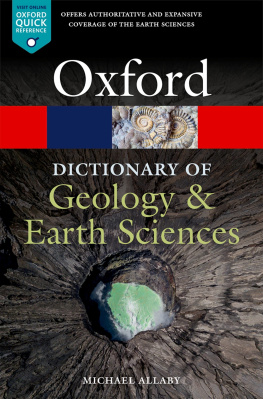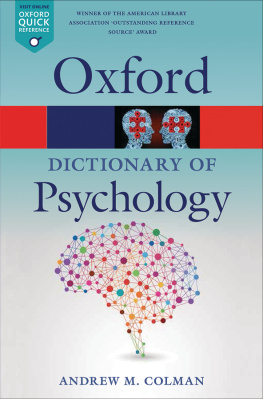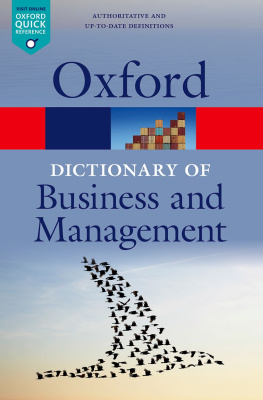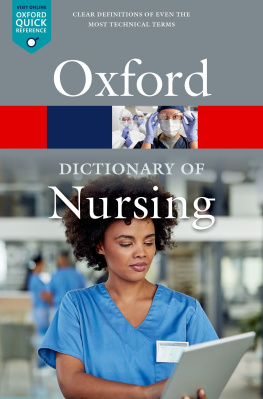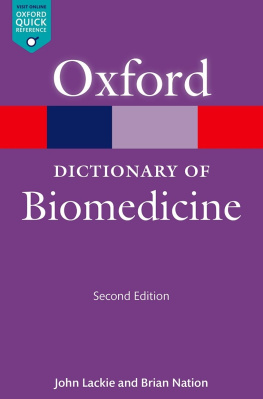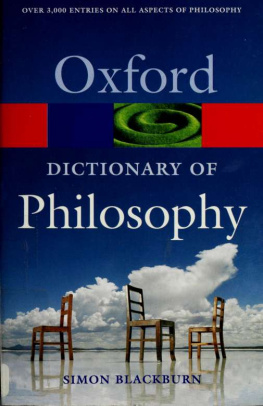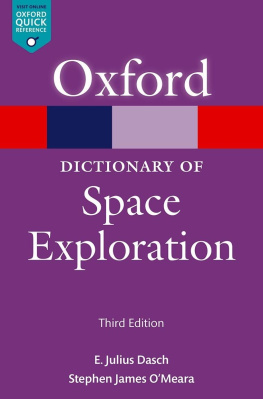How to search for terms in
A Dictionary of Biomedicine
To find an entry in this e-book you can:
Browse the and select the entry you would like to view
or
Use your Search function to be taken to a complete list of references to your search term in the
DictionaryIf your search term has its own entry, it will usually be listed at the top of your results
In cases where your search term appears in more than one entry heading, the results will be listed alphabetically
A note on special characters
While most e-readers can display special characters (such as and ), many cannot search for words containing them, unless the special characters themselves are typed into the search box. If you are unable to type these characters, please browse for your term using the .
A Dictionary of Biomedicine

Great Clarendon Street, Oxford, ox2 6dp, United Kingdom
Oxford University Press is a department of the University of Oxford. It furthers the University's objective of excellence in research, scholarship, and education by publishing worldwide. Oxford is a registered trade mark of Oxford University Press in the UK and in certain other countries
Oxford University Press 2010, 2019
The moral rights of the authors have been asserted
First published in 2010; second edition published online only in 2019
All rights reserved. No part of this publication may be reproduced, stored in a retrieval system, or transmitted, in any form or by any means, without the prior permission in writing of Oxford University Press, or as expressly permitted by law, by licence or under terms agreed with the appropriate reprographics rights organization. Enquiries concerning reproduction outside the scope of the above should be sent to the Rights Department, Oxford University Press, at the address above
You must not circulate this work in any other form and you must impose this same condition on any acquirer
Published in the United States of America by Oxford University Press
198 Madison Avenue, New York, NY 10016, United States of America
British Library Cataloguing in Publication Data
Data available
Library of Congress Cataloging in Publication Data
Data available
eISBN 9780199549351
ebook ISBN 9780191727948
CONTENTS
One of the most active research interfaces is that between medicine and the molecular biosciences, and rapid progress is being made in understanding the molecular basis of many diseases. Huge amounts of money have been, and are being, spent, and there are probably more people working at this interface than in any other research area. Inevitably, the interface provides opportunities for confusion, since the vocabularies of clinicians and molecular bioscientists do not necessarily overlap. Biomedicine has no clear boundaries, and yet this dictionary sets out to provide definitions of things that are relevant to those coming from either side. The approach has been inclusive rather than exclusive: some headwords may appear to belong to other disciplinesyet somewhere there will be a biomedical researcher using the term (I expect).
There is much more information available than can possibly be packed into a brief definition, and there are astonishingly rich online resources, freely available, that can be consulted. What the dictionary aims to provide is a succinct definition, a digested version of the more extensive information that exists on the internet and in the literature. I have drawn heavily on the suite of databases managed by the US National Center for Biotechnology Information (NCBI), in particular PubMed (http://www.ncbi.nlm.nih.gov/sites/entrez) for accessing the primary literature and OMIM (Online Mendelian Inheritance in Man: http://www.ncbi.nlm.nih.gov/sites/entrez?db=omim for information about those diseases for which a molecular basis is known (and some others). Another important source for information about proteins has been the Universal Protein Resource (UniProt: http://www.uniprot.org/uniprot).
Although the Human Genome Project has provided a rich source of data, linking nucleotide sequence to protein function and mutation to disorder requires considerable further effort, and understanding the molecular basis of a disorder does not automatically lead to a therapy or a drug to treat the disease. For those diseases that involve an infectious agent, the molecular bioscientist must struggle with the development of resistance, and the pharmaceutical arms race with pathogens is far from over. The latter is even more relevant as we approach the third decade of the twenty-first century and look forward with hope that the second Longitude Prizeto find a solution to antimicrobial resistancewill bear fruit.
It is, however, important to acknowledge the fact that a dictionary can never be a finished product, and this second editionupdated and now in electronic format rather than printreflects a specific point in biomedical evolutionary time and, by that very fact, is almost immediately out of date. That said, the original author, Dr John Lackie, is to be commended for his efforts in creating a comprehensive work that sits as well in 2019/2020 as it did when he handed the dictionary over almost a decade ago in March 2010.
Brian Nation, April 2019
(alpha) The prefix is either given as alpha or ignored and the main portion of the name used as the headword.
.
) an essential mediator of the TNF receptor-1 signalling complex.
.
.

http://aaa-proteins.uni-graz.at/
The AAA family website.
Age-associated memory impairment .
).
, etc.
.
Antigen binding cell .
Antigen binding capacity.
The avidinbiotin peroxidase complex. Used in an immunocytochemical method in which biotinylated anti-immunoglobulin binds the primary antigen-specific antibody, then the ABC complex with excess biotin-binding capacity binds biotin on the second antibody and the peroxidase used to catalyse a colorimetric reaction generating brown staining.
See .
The Fab fragments of a monoclonal antibody directed against the glycoprotein IIb/IIIa receptor on platelets that blocks platelet aggregation. Used as a short-term treatment to prevent thrombus formation after angioplasty. TN ReoPro.
.
A multifactorial disorder in which there is permanent dilation of the abdominal aorta, usually due to degenerative changes in the aortic wall. There is chronic inflammation of the aortic wall with remodelling of the extracellular matrix, and depletion of vascular smooth muscle cells. Defects in collagen type III are one cause of susceptibility.
A method for estimating total serum cholesterol levels that involves saponification of cholesterol ester by hydroxide, extraction with petroleum ether, and colour development with acetic anhydridesulphuric acid. Other methods are assessed against this reference standard method.
), a retrovirus, that requires coinfection of cells with a helper virus to proliferate and to cause a rapidly progressive lymphosarcoma (the Moloney murine leukaemia virus is often used). The oncogenic effects are due to its acquisition of c-abl, a nonreceptor tyrosine kinase, that has a G-actin binding site and an independent F-actin binding site.
.



